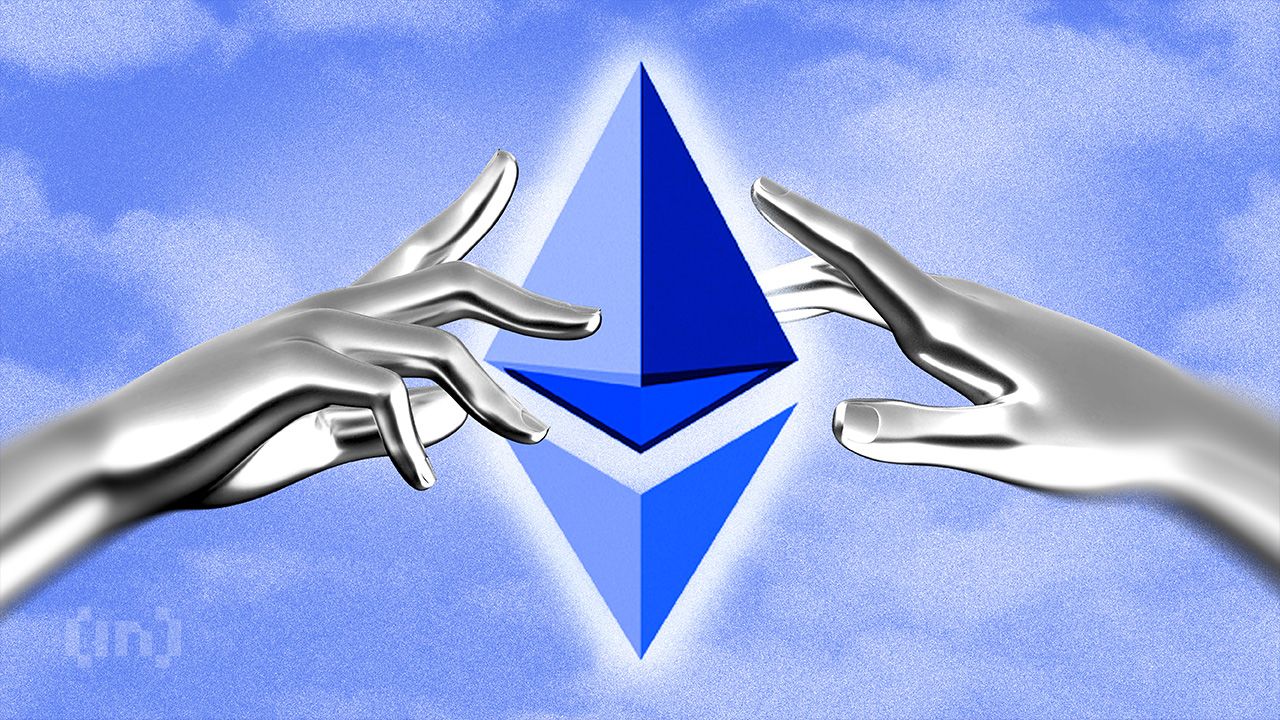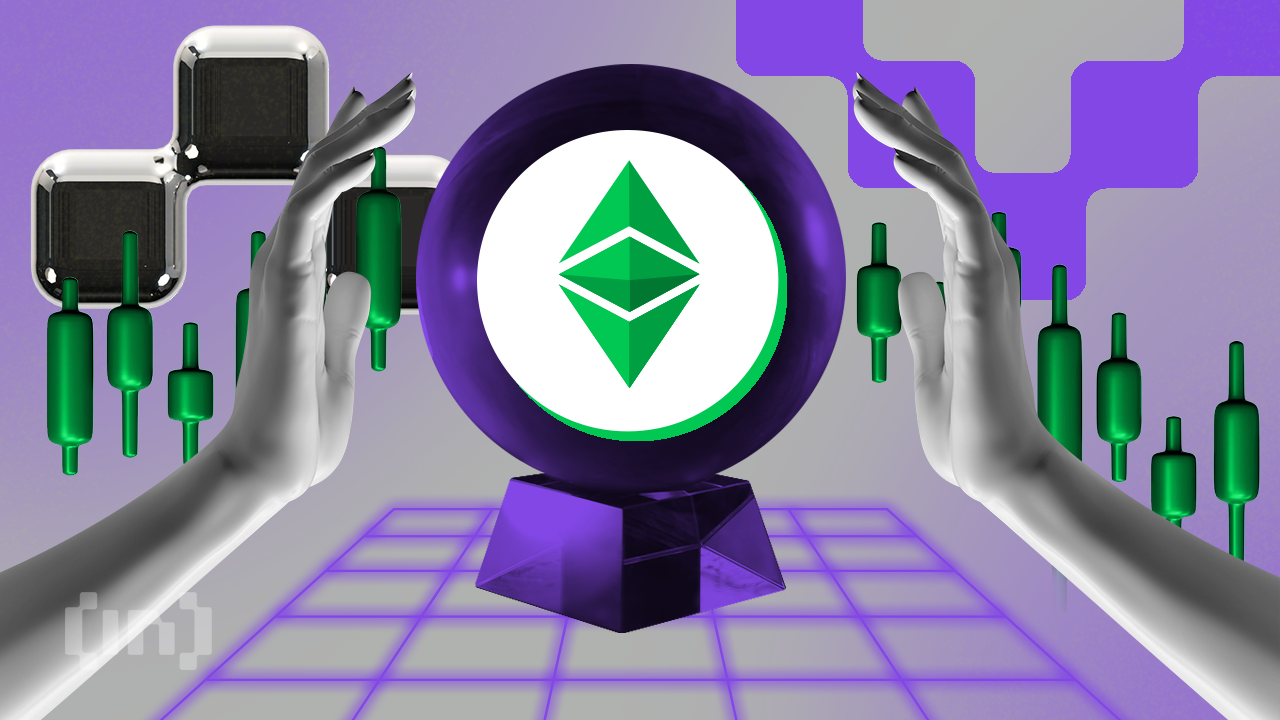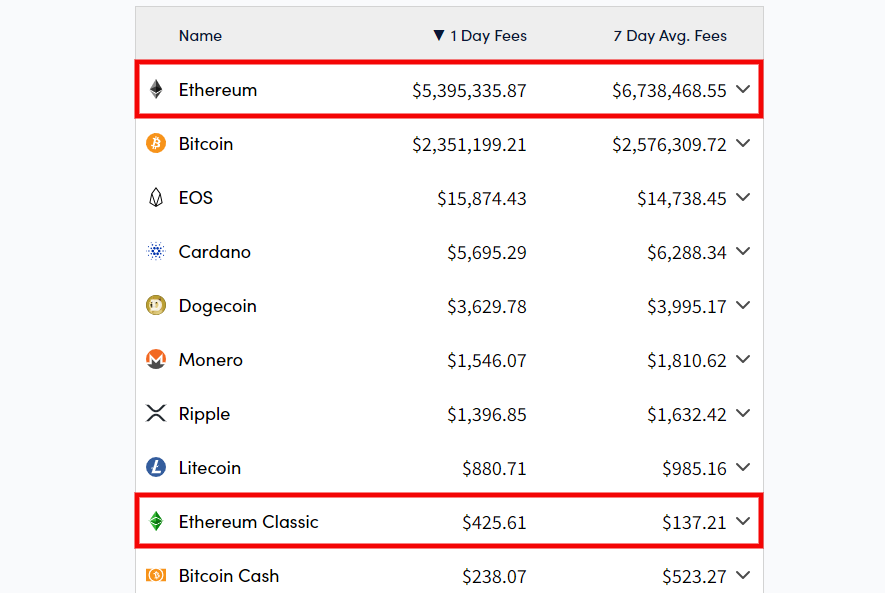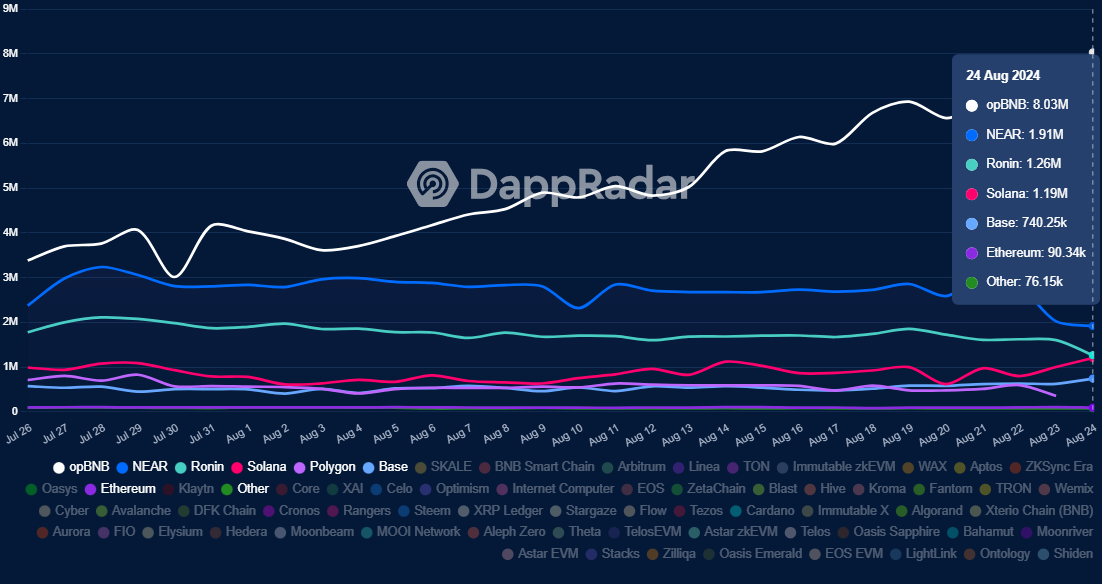What is the difference between Ethereum Classic and Ethereum, and which is the better investment? Though they are similar, one might present a better opportunity than the other. Before choosing to invest in one or the other, you must understand the differences between Ethereum Classic vs. Ethereum.
KEY TAKEAWAYS
• Ethereum Classic originated in 2016 after a controversial fork following the DAO hack.
• Ethereum transitioned to proof-of-stake for better scalability, while ETH Classic remains on proof-of-work.
• Ethereum Classic has a significantly smaller ecosystem than Ethereum, especially in DeFi and NFTs.
• ETH has a higher market cap, transaction fees, and more network activity, making it a stronger investment than ETC.
- Ethereum Classic (ETC) vs. Ethereum (ETH)
- The history of Ethereum and Ethereum Classic
- What is the purpose of Ethereum Classic?
- Is Ethereum Classic better than Ethereum?
- Is Ethereum Classic a good investment in 2025?
- Does Ethereum Classic follow Ethereum?
- ETH vs ETC: The final verdict
- Frequently asked questions
Ethereum Classic (ETC) vs. Ethereum (ETH)

Ethereum Classic and Ethereum are alike in many ways and not so much in others. There are a few key differences you want to keep in mind before deciding which is the better investment. For starters, Ethereum debuted in 2015, while ETH Classic in 2016.
SponsoredAfter years of intense anticipation, ETH completed its transition to proof-of-stake (PoS) on September 15, 2022. Ethereum Classic, however, is still proof-of-work (PoW).
There are also more granular technical differences between the two. For example, ETH Classic uses a modified Nakomoto consensus mechanism, while Ethereum uses the Gasper (LMD-Ghost and Casper-FFG) mechanism. Additionally, Ethereum has slightly faster block times, at about 12 seconds, while ETH Classic has roughly 13-second block times.
| Feature | Ethereum Classic | Ethereum |
|---|---|---|
| Launched | 2016 | 2015 |
| Mechanism | Proof-of-Stake | Proof-of-Work |
| Ticker | ETC | ETH |
| Max supply | 210.7 million | No maximum |
| Consensus | Nakomoto | Gasper |
| Block time | ~13 seconds | ~12 seconds |
The history of Ethereum and Ethereum Classic
Vitalik Buterin and a group of other skilled developers co-created the Ethereum blockchain in 2013; at that point in time, there was only one Ethereum blockchain and one Ether (ETH) cryptocurrency.
The main difference between Ethereum and the established Bitcoin blockchain is that the Ethereum blockchain allows you to build decentralized apps. Self-executing programs called smart contracts facilitate this process. Decentralized smart contracts made Ethereum very appealing, especially for small businesses.
The blockchain split was bound to happen when the Decentralized Autonomous Organization (DAO) was created. The DAO allowed parties worldwide to pool their funds and collectively decide what project to invest in.
The idea had a huge success, and it raised, at the time, $150 million worth of ETH. Unfortunately, a flaw in the blockchain code allowed the withdrawal of $60 million by attackers.
The entire situation divided the Ethereum community. The transparent and permanent ledger of the blockchain meant the events couldn’t be altered. However, a significant part of the community concluded that the Ethereum blockchain had to be altered to revert the attack and retrieve the funds.
Adopting a solution wasn’t possible within the community, leading to a hard fork. The blockchain that decided to keep records unaltered was renamed Ethereum Classic (ETC), while the other network rolled back the chain to undo the hack. This latter chain is the Ethereum that we know today.
The mayhem caused by the 2016 attack on the DAO, followed by the first blockchain hard fork, set the world for the first ETC vs ETH conversation.
Sponsored SponsoredWhat is the purpose of Ethereum Classic?

Ethereum Classic is an immutable blockchain. It holds the records of the 2016 exploit as well as the entire history of the network thereafter. The developers behind the project are still working hard to expand it into a global payment network. The community that stands behind Ethereum Classic has an idealist view of blockchain technology.
They are firm believers that no alterations should be made on the blockchain. Ultimately, we must remember that the technology was specifically created to prevent human manipulation.
The ETC idealists reject the reasoning that led to the hard fork of 2016. They maintain the sentiment that “code is law” to protect the immutability of a system built to be fundamentally different from the traditional global system.
The ETC community condemned the choice of the hard fork. They point out that it sets a precedent to create future forks for any reason that might be deemed worthy enough to break the rules.
Vitalik Buterin, founder of the Ethereum Foundation, intervened and chose to rescue the funds by a hard fork. Obviously, he did this with so much effort that was in the project that it really affected the value of his cryptocurrency. But would he intervene in every smart contract that goes wrong? Does that not set a dangerous precedent?
Hamish Massie: University of Sussex Business School
Is Ethereum Classic better than Ethereum?
While the essence of an indisputable and permanent ledger is the main value behind Ethereum Classic, its future seems to raise a series of concerns regarding security and scalability.
While Ethereum Classic offers smart contracts, it has struggled to gain the same popularity as Ethereum. A few things are missing, which have hindered its long-term growth. These include vision, support, and the vast developer support that the “canonical” Ethereum enjoys.
Many developers lost confidence in the network’s success after a series of 51% attacks. Some analysts have concluded that Ethereum Classic needs to adopt the PoS consensus mechanism to scale the transaction limit and eliminate the threat of future attacks.
Another way blockchains mitigate attacks is by spending money on security. To put it simply, a blockchain spends money on security through the amount it pays its miners/validators and the amount of gas or transaction fees it collects.
SponsoredThe more miners/validators (and the total amount staked for validators), higher gas fees, and transaction fees, the easier it is for the blockchain to mitigate denial of service (DoS) spam and majority attacks (e.g., 51% attacks in PoW or 33% attacks in PoS).
Therefore, it is important for blockchains to collect enough transaction fees to secure the network. Ethereum receives transaction fees in the millions on a daily basis, but ETH Classic receives only hundreds of dollars worth of fees.

Is Ethereum Classic a good investment in 2025?
After all the controversy, you must wonder, “Is Ethereum Classic a good investment?” There will always be the ETC vs ETH debate, as long-term cryptocurrency enthusiasts support one or the other. The Ethereum vs Ethereum Classic topic will forever remain an ideological battle.
Ethereum Classic vs. Ethereum price comparison
The price difference between Ethereum Classic and Ethereum grew wider as time progressed. However, they both had a bull run in 2017, dropped in 2018, and rose again in 2021, coinciding with the greater market. As of August 26, 2024, the all-time high for ETH is $4,362.35, while the all-time high for ETC is $176.16.

At the moment, Ethereum is a better investment. ETH has become a crypto powerhouse and is second only to Bitcoin regarding market cap. It’s also the backbone of the burgeoning Decentralized Finance (DeFi) and non-fungible token (NFTs) sectors.
Ethereum Classic, however, has had a different story. It has struggled a bit without much support, vision, or strong fundamentals. ETC’s price movements in 2021 benefitted from the meme coin trend as investors searched for low-cost coins to pump.
Sponsored SponsoredThis has led to the price soaring and posting massive returns for investors. Considering all these and the Ethereum Classic vs Ethereum story, we recommend ETH as a better investment.
Does Ethereum Classic follow Ethereum?
After the hard fork in 2016 on the Ethereum network, many important changes took place. The Ethereum vs Ethereum Classic is an ongoing comparison in many communities. But facts have made it easy to understand that Ethereum strives to become the ultimate DeFi service provider as it continues to grow and develop the platform.
The Ethereum Classic network decided to follow Bitcoin’s scarcity model. The network has a hard cap of approximately 210 million ETC. The block rewards are reduced by 20% for every 5 million blocks. Ethereum still mints ETH coins at the same rate and has no hard cap.
At the same time, the Ethereum network switched from a PoW mechanism to a PoS in 2022. The PoS consensus mechanism requires fewer resources to maintain the network and is the most environmentally friendly option for any blockchain network.
Although it was mentioned in the original roadmap of Ethereum, the Ethereum Classic network decided to delay the switch to PoS and has now completely removed it from their plans. ETC will continue to operate as a PoW network.
Considering the major differences in how the two platforms plan to grow, it is obvious that Ethereum Classic is not following Ethereum. Performance metrics, such as total transactions, point to Ethereum being the best-performing network of the two.
The Ethereum network can perform about 30 transactions per second (tps), and Ethereum Classic can perform about 15 tps. At the same time, most of the value from existing DApps comes from Ethereum, while only a handful of DApps are deployed on Ethereum Classic.

ETH vs ETC: The final verdict
When comparing Ethereum Classic vs Ethereum, the lower price is the major attraction for the former. However, the lack of a road map to induce improvement and growth sets it back and labels ETC as an inferior investment. The plan to adopt PoS has ensured a greater adoption for ETH and allowed Ethereum to scale the number of transactions while lowering fees.

